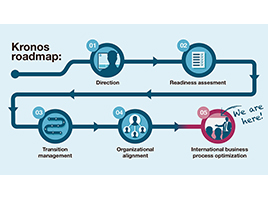Anyone who hasn’t been involved in business for a couple of decades would be absolutely surprised by what they see if they walked back into a modern office. Today’s businesses don’t look much like those of the 1980s or even the 1990s, primarily because of new digital technologies that are changing many things about how we work and manage our commercial operations.

From products to people to processes, new software products are changing the game when it comes to back office management. Here are seven technologies that have changed the ways that human decision-makers create a path forward for a business:
Inventory Management Tools
Inventory management is one of the biggest improvements that have been made in all of enterprise IT.
Inventory tracking and management tools help make inventory operations entirely transparent — anyone can see how much inventory is on hand, and historically, how much inventory the business has used. But this is just the tip of the iceberg when it comes to what inventory management can do.
These software tools can effectively help companies consolidate and potentially close down warehouse operations because of the enormous cost savings it provides. Inventory management tools can even reveal clues about customer demand and behavior that can help the business sell better. The bottom line is that inventory management tools have provided all sorts of powerful ROI and cost savings to companies.
Supply Chain Execution
Other software tools go back even further in your business processes, starting with the raw materials or pieces that enter business locations. By creating a digital network of suppliers and managing supply chain information, companies can save a lot of time and effort involved in sourcing what they need for internal operations.
Supply chain execution packages can help businesses save a lot of money with easy supply price comparisons. They can enhance relationships with suppliers and show what delivery options the company has at its disposal.
In another sense, supply chain software is that first link in the chain of developing business intelligence in every step of the overall operation.
Product Lifecycle Management
Product lifecycle management tools can integrate with the two above types of tools, inventory management and supply chain execution, extending the analysis throughout the entire product lifecycle. These tools can track products that are fully assembled and ready to be delivered to customers. With this extensive analysis comes even more insight into how businesses should plan for the future. One of the big advantages of product lifecycle management tools is the analysis of products in the field, including their maintenance requirements and the relationships necessary to handle this stage of the process.
Human Resources Management Tools
Human resources management (HRM) software helps handle the “people end” of your business operations. These software packages often combine multiple components, such as time management and tracking tools; payroll and tax information; and employee onboarding resources. Many of these human resources software packages focus on the differing stages of employment, from interviews to hiring, hiring to onboarding, onboarding to long-term employment and from employment to retirement or termination. HRM tools provide another lifecycle tool that companies use throughout various stages of their business processes. They can come back to the tool over time to craft better policies and build better relationships with their employees.
Mobile Workforce Management Tools
Along with good human resources tools, mobile workforce management solutions also provide a lot of value to businesses that want to keep in touch with workers out in the field.
There’s some overlap between these two types of human capital management software platforms. Both may combine some element of scheduling, time management or payroll and tax information tools. However, much of the focus in mobile workforce management is empowering the field workers to submit and receive information from wherever they happen to be. One example is where mobile workers can upload information from customer interactions directly to the corporate office, or download critical information to show to customers in a remote location.
Business Process Management
Business process management software is aimed at internal operations. BPM software works to break down a complex operation into a workflow, or a set of sequential tasks.
Utilizing these types of software, companies can improve their core operations that are focused on providing products or services to their customer base. Many of these software solutions use helpful modeling to show, at a glance, what’s going on inside of the business. This provides yet another critical piece for a comprehensive enterprise architecture that evaluates every aspect of the company: how its people work, what it makes/does and how it sources what it needs.
Demand Planning and Forecasting
Another type of enterprise feature known as demand planning helps provide predictive analytics that show the company how to meet future customer demand. Prompt delivery is everything in most industries, and demand planning can help plan for adequate production and expedited delivery to meet demand, enhancing the company’s reputation in its field.
Think about how all of these new types of software functionality enable business leaders to manage commercial operations in today’s data-rich environment, where business intelligence can make all the difference.




